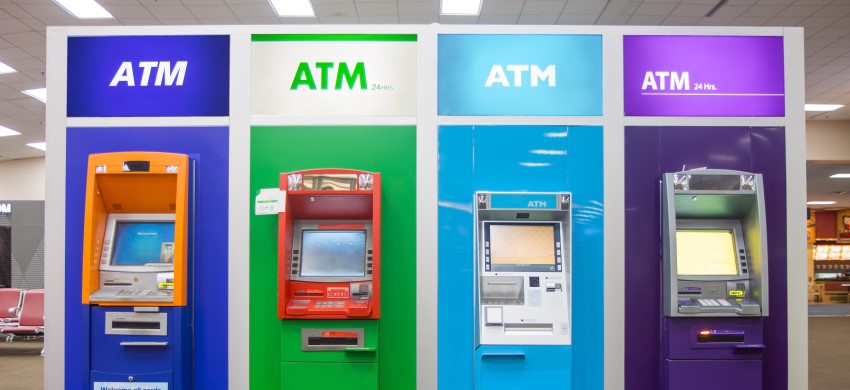You might have come across the term ‘ATM pooling’ before as last year four major Belgian banks signed an agreement to jointly manage a single network of ATMs under a neutral brand named Batopin.
Its first bank-neutral ATMs are due to be installed any time soon, with the complete deployment expected to be completed by the end of 2025.
Participating banks aim to ensure that 95% of the population has access to an ATM within 5 km of their home or workplace.
What is ATM pooling?
It is an established alternative to providing access to cash in Finland and Sweden, where in 2011, five of Sweden’s largest banks (Danske Bank, Handelsbanken, Nordea, SEB and Swedbank) announced they were transferring ownership of their ATMs to a separate company, Bankernas Automatbolag, that will operate ATMs on their behalf.
This initiative follows similar developments in Finland, where all bank ATMs have been operated by a single outsourcing organisation since the mid-1990s.
Or in Netherlands where the three largest banks are currently in the process of transferring their ATMs to the Geldmaat network, a cooperation between three major banks to guarantee the availability and accessibility of cash for their combined customers.
The migration is expected to be completed this summer, with neutrally branded ATMs located away from any bank branches as a rule.
It is worth noting that the Netherlands is one of the least cash dependent countries in Europe, which has made it easier for major Dutch banks to reach a pooling agreement. As a matter of fact, it is easier in small markets with a limited number of ATM deployers.
ATM pooling is when two or more banks agree to hand over the ownership of their ATM fleet to a separate entity, which will solely operate them. The drivers might be cost pressures, reduced profitability in the ATM channel, as well as “over supply” where ATMs are located closely together and competing for limited business.
Banks who are part of this will have access to an increased network, enjoy lower costs, and more opportunities to commercialise the offering with increased services available through ATMs.
Pooling allows banks to ensure that widespread cash services are maintained for the future, especially to customers in locations where relatively low demand would render a branch or multiple bank ATMs uneconomical, in an efficient and cost-effective way.
RBR’s Global ATM Market and Forecasts to 2025 Report discovered there has been increasing interest in the concept recently, with the pandemic accelerating the long-term decline in cash usage to reduce operational costs.
The latest developments
As more and more payments are made without cash, banks are considering pooling their ATM resources to reduce the cost of providing cash services. However, pooling agreements between competing banks are hard to reach, especially in larger markets.
ATM pooling can be taken up in several ways depending on the bank’s strategy, there is simple cash withdrawal, cash deposit, and mobile channel integration.
These all provide obvious and immediate benefits to the customer in terms of a sleek customer experience, quicker transactions, and the ability to leverage mobile applications – allowing customers to withdraw or transfer cash using their personal device. New services such as mobile top up, third-party payments or other services offered by home banking could also be incorporated.
Key advantages
ATM pooling creates the ultimate level of optimisation and efficiency in terms of the ATM network infrastructure and can drive towards a rationalisation of cashpoints on the territory. There are also other key advantages:
- Efficiency
- Security
- Protection from hardware and software obsolescence
- Financial and social inclusion
- Easier access to cash services at convenient times and locations
- Trend towards 24-hour branches based on ATM-like technology
- ATM pooling offers the opportunity to modernise cash machines, which have traditionally been placed near or inside branches. This new approach allows banks to re-evaluate where ATMs and, in some cases, branches should be placed based on new changing social needs and habits; for example inside shopping centres or railway stations.
Financial institutions can also leverage ATM pooling to review their branches’ existing presence in the territory and eventually adopt an assisted self-service terminal (ASST) branch model.
ATMs and, above all, ASSTs have the potential to become the platforms for offering a wider range of financial services, and much more, to increase the bank’s potential to drive new streams of revenue to subside the operation of banking services.
Robin Amlôt of IBS Intelligence spoke to Stefano Cipollone, Business Development Manager at Auriga, about how ATM pooling can help address the dilemma of ensuring access to cash.

 IT
IT  ES
ES 








